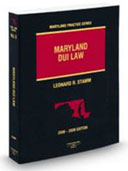Last week I wrote about the decision of the Supreme Court in Bullcoming v. New Mexico. Everyone who participated (I helped to author the amicus brief filed by the National Association of Criminal Defense Lawyers – NACDL) was thrilled. The Supreme Court held that a surrogate chemist could not testify to a blood alcohol reading when he did not supervise or observe the chemist performing the analysis without violating the Sixth Amendment’s Confrontation Clause. This outcome was in doubt due to the replacement of two of the five justices in the majority in Melendez-Diaz v. Massachusetts, Justices Stevens and Souter. They were replaced by Justices Sotomayor and Kagan. Melendez-Diaz held that the chemist had to actually come to court and that a report would not suffice for confrontation purposes.
Melendez-Diaz was a 5-4 decision. The opinion, written by Justice Scalia, was joined by Justices Stevens, Souter, Thomas, and Ginsburg. The dissenters were Justices Kennedy, Breyer, Roberts and Alito. After Melendez-Diaz was decided, on June 25, 2009, the dissenters did not waste any time trying to get it overruled, perhaps to see if they could garner the vote of the justice who would replace Justice Souter, Justice Sotomayor. On the same day as the decision in Melendez-Diaz, the Supreme Court granted certiorari in Briscoe v. Virginia. Unfortunately for the dissenters, Briscoe, which challenged Virginia’s permutation of a notice and demand statute, and required the defense to call the opposing witness in its case, turned out to be a dud. On January 25, 2010, the Supreme Court followed Melendez-Diaz and issue a per curiam reversal in Briscoe. Justice Sotomayor had clearly sided with the Melendez-Diaz majority.
In Bullcoming, Justices Kagan, Sotomayor, and Thomas were aligned with the majority, but how long they will remain is yet to be seen. Justice Thomas’s adherence seems to be based on his interpretation of the Sixth Amendment prohibiting the use of formal documents in place of testimony. Justice Sotomayor wrote a concurring opinion, noting four possible exceptions to the Bullcoming rule (see my last blog). All three of these justices did not join Part IV of Justice Ginsburg’s opinion, discussing practical options to prosecutors faced with witness problems as a result of the Bullcoming decision. The significance of this is yet to be seen.
As the dissenters most likely voted to review Briscoe, within days of the release of the decision in Melendez-Diaz, on June 28, 2011, the Supreme Court granted certiorari in Williams v. Illinois. Williams was a DNA case, where one of the analysts who conducted the DNA analysis did not testify. Rather, a different DNA analyst, testified based on the raw data, that there was a match between the DNA found at the crime scene and Williams. The testifying chemist testified that it was common for DNA analysts to rely on tests from reputable labs, such as Cellmark, in Germantown, Maryland, where the sexual assault kit test was done.
This potentially raises two scenarios where the five member majority in Bullcoming could lose a vote. There was no introduction of a formal certification stating the testing analyst’s results – an apparent requirement of Justice Thomas. And the opinion appears to have been allowed under the Illinois equivalent of Rule 703 of the Federal Rules of Evidence, which had been alluded to in Justice Sotomayor’s concurring opinion. As the Illinois Supreme Court stated: “The court has long held that prohibitions against the admission of hearsay do not apply when an expert testifies to underlying facts and data, not admitted into evidence, for the purpose of explaining the basis of his opinion.”
In this evolving area of the law – confrontation – the rules that apply to confrontation and rules of evidence, often do not overlap. With respect to the evidentiary part of the analysis, to say that the underlying result of the DNA test was not admitted for the truth of the matter asserted appears to be sophistry. Clearly, you cannot match two DNA samples without knowing the result of each. With respect to confrontation, according to Melendez-Diaz and Bullcoming, each individual DNA result is an assertion, which much be presented live and subject to cross-examination. In this regard perhaps it is worth repeating what the Supreme Court said in Melendez-Diaz and repeated in Bullcoming:
This Court settled in Crawford that the “obviou[s] reliab[ility]” of a testimonial statement does not dispense with the Confrontation Clause. 541 U. S., at 62; see id. , at 61 (Clause “commands, not that evidence be reliable, but that reliability be assessed in a particular manner: by testing [the evidence] in the crucible of cross-examination”). Accordingly, the analysts who write reports that the prosecution introduces must be made available for confrontation even if they possess “the scientific acumen of Mme. Curie and the veracity of Mother Teresa.” Melendez-Diaz , 557 U. S., at ___, n. 6 (slip op., at 14, n. 6).
Next term the Supreme Court will take up Williams, and decide whether Melendez-Diaz and Bullcoming will be extended, curtailed, or overruled.
If you are facing serious criminal or traffic charges in Maryland call Leonard R. Stamm or Johanna Leshner of Goldstein & Stamm, P.A. at 301-345-0122 for a free consultation.
Leonard R. Stamm
Goldstein & Stamm, P.A.
6301 Ivy Lane, Suite 504
Greenbelt, Maryland 20770
www.lstamm.com
301-345-0122
(fax) 301-441-4652
Author: West’s Maryland DUI Law

 Maryland DUI Lawyer Blog
Maryland DUI Lawyer Blog

